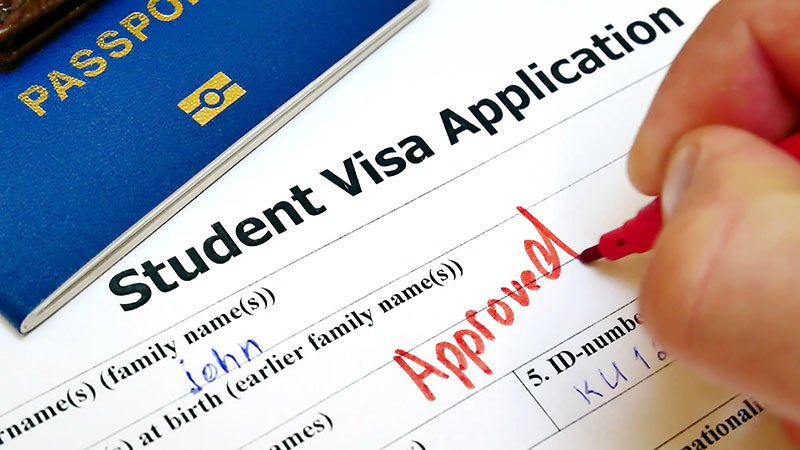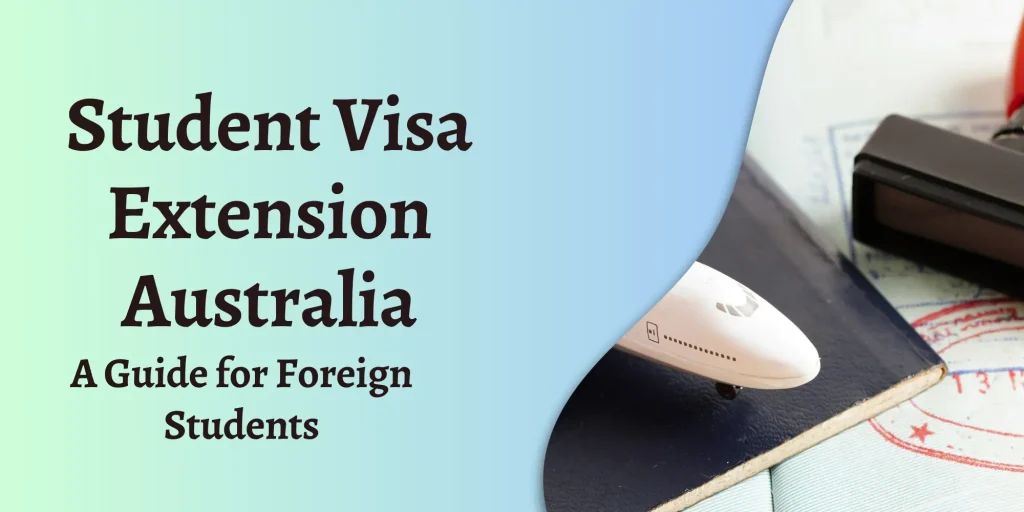How to Extend Your Study Abroad Visa: A Complete 2026 Guide
Studying abroad is an exciting journey, offering new academic challenges, cultural experiences, and personal growth. However, sometimes your initial study visa may not cover the full duration of your program. Whether your course has been extended, you’ve decided to pursue further studies, or unforeseen circumstances have arisen, knowing how to extend your study abroad visa is crucial to staying compliant with immigration laws.
In 2026, student visa regulations are stricter than ever in many countries, making timely and accurate applications essential. This guide provides a complete step-by-step roadmap to successfully extend your study abroad visa.

Understanding the Need for a Visa Extension
A study visa typically covers the duration of your academic program plus a short grace period. Extending your visa may become necessary if:
- Program Extension – Your university extends your course due to additional semesters or research requirements.
- Further Education – You plan to enroll in a higher-level degree (e.g., moving from a bachelor’s to a master’s program).
- Administrative Delays – Visa processing, university paperwork, or personal situations delay graduation.
- Additional Opportunities – You wish to participate in internships, research projects, or exchange programs.
Important: Staying in a country beyond your visa’s validity without extension can lead to fines, deportation, or future visa denials.
Step 1: Check Eligibility for Visa Extension
Different countries have varying eligibility criteria for extending a study visa. Typically, you must:
- Be enrolled in a recognized educational institution.
- Maintain good academic standing.
- Demonstrate financial capability to cover tuition and living expenses.
- Apply before your current visa expires (late applications are often penalized).
Pro Tip: Most countries recommend submitting your extension application 2–3 months before your current visa expires.
Step 2: Gather Required Documents
The documents required for extending your student visa in 2026 can vary by country and institution. Generally, the list includes:
Core Documents
- Valid Passport – Must be valid for the full duration of the requested extension.
- Current Student Visa – A copy of your existing visa or permit.
- Proof of Enrollment – Letter from your university confirming continued studies or program extension.
- Financial Proof – Bank statements, scholarship letters, or student loans showing sufficient funds.
- Academic Records – Transcripts or progress reports demonstrating satisfactory performance.
- Health Insurance – Proof of continued coverage if required by the host country.
Additional Documents (Country-Specific)
- Statement of Purpose (SOP) explaining why you need an extension.
- Accommodation proof.
- Biometric data or new photographs.
- Health certificates or vaccination records if mandated.
Pro Tip: Keep both original documents and scanned digital copies. Some countries require online uploads.
Step 3: Contact Your University’s International Office
Most study visa extensions require a university endorsement. Steps typically include:
- Request a confirmation letter stating your course extension or academic standing.
- Verify deadlines for submitting visa extension requests.
- Ask about support documents—universities often provide templates or letters for immigration authorities.
Pro Tip: A strong letter from your university significantly improves your extension approval chances.
Step 4: Complete the Visa Extension Application
Visa extension applications are usually submitted online or at the immigration office.
Tips for Completing the Form
- Enter all information exactly as it appears on your passport.
- Specify your new intended course end date.
- Attach all required documents, including university confirmation and financial proof.
- Pay the extension fee online (or as instructed by the local embassy/immigration office).
Pro Tip: Some countries allow students to apply while staying in the country, while others require you to leave and reapply from your home country. Check the latest 2026 regulations.

Step 5: Pay the Visa Extension Fee
Visa extension fees vary by country and type of program:
- United States (F-1 Extension) – No fee for status extension; SEVIS fee may apply in some cases.
- UK (Student Route Visa Extension) – £475–£600 depending on course length.
- Australia (Student Visa Subclass 500 Extension) – AUD 630+
- Canada (Study Permit Extension) – CAD 150
Pro Tip: Keep receipts as proof of payment; some immigration authorities request them during processing.
Step 6: Submit Biometrics or Attend an Interview (If Required)
Some countries may require updated biometric data (fingerprints, photographs) or an in-person interview during your extension application.
Tips for Success
- Schedule appointments well in advance to avoid delays.
- Bring all original documents, including your current visa and passport.
- Be prepared to explain the reason for your extension clearly and concisely.
Pro Tip: In 2026, many countries are implementing digital biometrics systems, so online appointments may be mandatory.
Step 7: Wait for Visa Extension Approval
Processing times for visa extensions vary by country:
- USA: 1–3 months for I-20 extension processing
- UK: 8–12 weeks for Student Route extension
- Australia: 4–6 weeks for Student Visa 500 subclass extension
- Canada: 3–5 weeks for study permit extension
Tips During Processing
- Track your application online if available.
- Respond promptly to additional document requests.
- Avoid making travel plans until your extension is approved.
Pro Tip: Always keep a copy of your submitted application for reference.
Step 8: Receive and Verify Your Extended Visa
Once approved, check the following details carefully:
- Correct name spelling and passport number
- Updated validity period
- Any new conditions or restrictions (work limits, travel rules, reporting requirements)
Tips for Students
- Store the visa safely with your passport.
- Keep digital copies as backups.
- Share relevant updates with your university’s international office.
Step 9: Plan for Compliance During Your Extended Stay
After receiving your extended visa, you must comply with all regulations:
- Maintain full-time enrollment – Most countries require students to remain enrolled.
- Report address changes – Many countries require updates to local authorities.
- Work restrictions – Abide by part-time work rules; exceeding limits can affect visa status.
- Reapply or upgrade if needed – If you pursue further studies, check whether you need a new visa or another extension.
Pro Tip: Failing to comply with visa conditions can jeopardize future visa applications.

Common Challenges When Extending Your Study Visa in 2026
- Late Applications
- Apply at least 2–3 months in advance to avoid gaps in status.
- Insufficient Financial Proof
- Update bank statements or scholarship confirmations to cover tuition and living expenses.
- Missing or Incorrect Documents
- Double-check every form and attachment; even small errors can cause rejection.
- Program Changes
- If you change universities or programs, ensure your extension aligns with new admission details.
- Digital Submission Glitches
- Many countries use online portals; upload documents in the correct format and size.
Country-Specific Guidelines (2026)
| Country | Extension Process | Typical Timeline | Special Notes |
|---|---|---|---|
| USA | Submit I-20 form to USCIS | 1–3 months | Must maintain full-time enrollment |
| UK | Online extension under Student Route | 8–12 weeks | Must show financial capacity & continued study |
| Australia | Apply online via ImmiAccount | 4–6 weeks | Must maintain health insurance coverage |
| Canada | Apply online before study permit expiry | 3–5 weeks | Biometrics may be required |
| Germany | Apply at local Ausländerbehörde | 6–8 weeks | Must prove continued enrollment and financial resources |
Pro Tips for a Smooth Visa Extension
- Start Early – Begin the process 2–3 months before your visa expires.
- Organize Documents – Use checklists and maintain both physical and digital copies.
- Communicate with Your University – Universities often provide guidance letters or support.
- Track Deadlines – Each country and visa type has specific submission timelines.
- Maintain Legal Status – Avoid overstaying your current visa while awaiting approval.
- Consult Immigration Experts – For complex cases or program changes, professional guidance can prevent mistakes.
Conclusion
Extending your study abroad visa in 2026 may seem challenging, but with careful planning, timely applications, and proper documentation, it can be a smooth process.
Key takeaways:
- Understand your country’s visa rules and eligibility criteria.
- Gather all required documents and university endorsements.
- Submit applications early and pay fees accurately.
- Follow up with immigration authorities and comply with new visa conditions.
By following this step-by-step guide, you can continue your academic journey abroad without interruptions, ensuring a safe, legal, and enriching study experience.